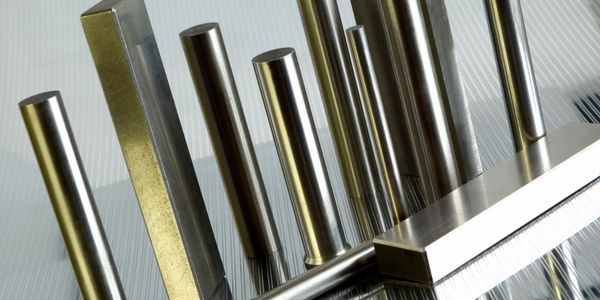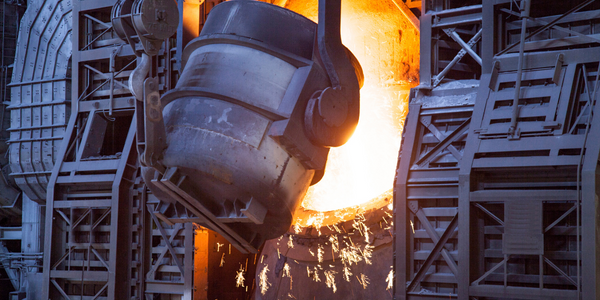Download PDF
Optimizing Steel Production with IoT: A Case Study of BlueScope Steel Limited
Technology Category
- Sensors - Air Pollution Sensors
- Sensors - Environmental Sensors
Applicable Industries
- Metals
Use Cases
- Time Sensitive Networking
The Challenge
BlueScope Steel Limited, a division in New Zealand, produces 650,000 tons of steel annually from locally sourced iron sand and coal. A crucial part of this process involves the direct reduction of iron sand by char in four rotary kilns. These kilns, large structures with 65 meter-long revolving cylinders, are used to remove oxygen from iron sand to produce a partially reduced material containing the correct amount of carbon for feeding into downstream melters. However, the company faced challenges in understanding the flow patterns, temperature, and concentration contours inside these kilns. Accretion layers or rings, derived mainly from impurities, occasionally form on the inner face of the kiln shell, limiting the production rate. The company needed a solution to this complex problem involving highly turbulent flows, chemical reactions, heat transfer, and a very large geometry in a reasonable time. They also needed to test a range of operating conditions and geometries efficiently.
About The Customer
BlueScope Steel Limited is a steel production company operating a division in New Zealand. The company produces 650,000 tons of steel per year from locally sourced iron sand and coal. A key component of their production process involves the direct reduction of iron sand by char in four rotary kilns. These kilns are large structures, about 4.2 meters in diameter with 65 meter-long revolving cylinders. The primary function of the kilns is to remove oxygen from iron sand to produce a partially reduced material containing the correct amount of carbon for feeding into downstream melters. The reduction process requires energy which is supplied by the combustion of carbon monoxide and char.
The Solution
BlueScope Steel Limited turned to ANSYS CFX and ANSYS DesignModeler software to provide a solution to their challenges. These software solutions were run on a 64-bit workstation to carry out the computations. The solution showed good stability and converged in less than 200 iterations. The computational fluid dynamics (CFD) results were qualitatively validated against available experimental data. The flexibility of both software packages allowed for quick implementation of changes in geometry and/or operating conditions. This provided full details of the predicted temperature, velocity, and concentration contours throughout the kiln in a relatively short time frame. The effects of air flow rates and other operating parameters were also examined readily, contributing to a better understanding of kiln operation and optimization of plant production.
Operational Impact
Quantitative Benefit
Related Case Studies.

Case Study
Goldcorp: Internet of Things Enables the Mine of the Future
Goldcorp is committed to responsible mining practices and maintaining maximum safety for its workers. At the same time, the firm is constantly exploring ways to improve the efficiency of its operations, extend the life of its assets, and control costs. Goldcorp needed technology that can maximize production efficiency by tracking all mining operations, keep employees safe with remote operations and monitoring of hazardous work areas and control production costs through better asset and site management.

Case Study
KSP Steel Decentralized Control Room
While on-site in Pavlodar, Kazakhstan, the DAQRI team of Business Development and Solutions Architecture personnel worked closely with KSP Steel’s production leadership to understand the steel production process, operational challenges, and worker pain points.

Case Study
Bluescope Steel on Path to Digitally Transform Operations and IT
Increasing competition and fluctuations in the construction market prompted BlueScope Steel to look toward digital transformation of its four businesses, including modern core applications and IT infrastructure. BlueScope needed to modernize its infrastructure and adopt new technologies to improve operations and supply chain efficiency while maintaining and updating an aging application portfolio.

Case Study
RobotStudio Case Study: Benteler Automobiltechnik
Benteler has a small pipe business area for which they produce fuel lines and coolant lines made of aluminum for Porsche and other car manufacturers. One of the problems in production was that when Benteler added new products, production had too much downtime.

Case Study
Continuous Casting Machines in a Steel Factory
With a very broad range of applications, steel is an important material and has been developed into the most extensive alloy in the engineering world. Since delivering high quality is absolutely crucial for steel plants, ensuring maximum productivity and the best quality production are the keys to competitiveness in the steel industry. Additionally, working conditions in steel factories are not suitable for workers to stay in for long periods of time, so manufactures usually adopt various machines to complete the steel production processes. However, the precision of these machines is often overestimated and the lack of flexibility also makes supervisors unable to adjust operating procedures. A renowned steel factory in Asia planned to improve its Distributed Control System (DCS) of furnaces as well as addressing the problem of insufficient accuracy. However, most well-known international equipment suppliers can not provide a satisfactory solution and local maintenance because the project needed new technologies to more accurately control equipment operations. By implementing Advantech’s automated monitoring and control solution, steel factories can not only improve the manufacturing processes but can also allow users to add additional functions to the existing system so as to make sure the operation runs at high efficiency.

Case Study
Automated Predicitive Analytics For Steel/Metals Industry
Asset to be monitored: Wire Compactor that produces Steel RebarCustomer Faced The Following Challenges:Dependent upon machine uptime.Pressure cylinders within the compactor fail to control compression and speed causing problems in binding the coil.Equipment failure occurs in the final stage of production causing the entire line to stop, can you say bottleneck?Critical asset unequipped with sensors to produce data.





